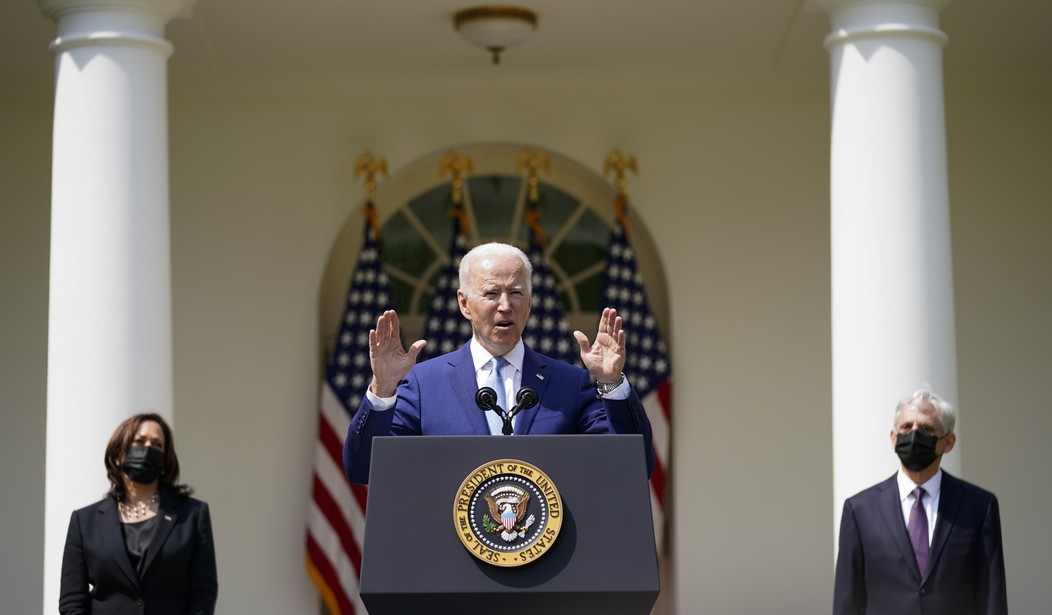Joe Biden has announced his intention to make the United States, the world’s largest economy, significantly reduce carbon emissions by 2030. Specifically, the plan sets “a new target for the United States to achieve a 50-52 percent reduction from 2005 levels in economy-wide net greenhouse gas pollution in 2030.”
The “how” of this target is very unspecific. Take these paragraphs as an example.
To develop the goal, the Administration analyzed how every sector of the economy can spur innovation, unleash new opportunities, drive competitiveness, and cut pollution. The target builds on leadership from mayors, county executives, governors, tribal leaders, businesses, faith groups, cultural institutions, health care organizations, investors, and communities who have worked together tirelessly to ensure sustained progress in reducing pollution in the United States.
Building on and benefiting from that foundation, America’s 2030 target picks up the pace of emissions reductions in the United States, compared to historical levels, while supporting President Biden’s existing goals to create a carbon pollution-free power sector by 2035 and net zero emissions economy by no later than 2050. There are multiple paths to reach these goals, and the U.S. federal, state, local, and tribal governments have many tools available to work with civil society and the private sector to mobilize investment to meet these goals while supporting a strong economy.
What are those paths and how do they work? The answer can be boiled down to an emoji: ¯_(ツ)_/¯
Perhaps hand-waving will become part of Biden’s wind energy generation package.
Joe Biden isn’t a scientist and he has no scientific background. He has no experience in the private sector at all. He’s experienced in selling influence but has never sold a product to a customer.
Snark aside, there’s no “how” in the proposal. It includes edicts such as reducing tailpipe emissions from cars, but doesn’t get into the engineering of how that might be accomplished. Electrify all the cars, right? As I’ve written here numerous times now, that means we’ll need double the power we currently generate, per Elon Musk. It also doesn’t get into the effects the proposals would have on cars, on the power grid, and on the economy as a whole. Such questions are papered over by calling out the hope of creating “good-paying, middle-class, union jobs.” What about right-to-work states? What about Biden’s other initiatives, such as raising the corporate income tax, that will reduce overall wages and drive American manufacturing jobs overseas? What’s China doing while the United States is powering down?
Central planners tend not to address such complications. If central planning ideologies have a single fatal flaw, it’s their utter inability to address the complexity of life. We see it throughout leftist thought. Critical race theory puts people in imaginary boxes based on skin color and confines them there, no matter what they actually think or do. Marxism divides everyone into distinct classes and pits them against each other. Life is simply more complex than that.
Professor Roger Pielke Jr. of the University of Colorado at Boulder has come up with a way to measure progress on Biden’s plan to reduce carbon emissions by 50-52% by 2030 and achieve a carbon-neutral economy by 2035.
In January 2021, according to the US Energy Information Agency in the United States there were 1,852 coal and natural gas power plants that generated electricity. By 2035, to hit President Biden’s target all of these power plants will have to be either shut down or converted into zero-emissions power plants (using carbon capture and storage technologies that presently do not exist).
There are 164 months until 2035. That means that more than 11 of the fossil fuel power plants operational in January 2021 will need to be closed every month, on average, starting today until 2035. Tracking progress on the closure (or conversion to carbon-free) of power plants can provide a very useful marker of progress toward achieving the Biden Administration’s overall climate targets.
Let’s assume the professor is right. Biden’s plan avoids going within miles of a serious calculation such as this. It’s all positive spin, no negative real-world repercussions.
There is simply no way the United States can shut down 11 coal and natural gas power plants per month and not feel the effects of that. What effects? Blackouts and brownouts, freezing to death in winter, burning up in summer. And an economy crushed by unreliable and extremely expensive energy. We would suffer a ripple effect across the energy industry that would effectively destroy it too, causing destruction across state and local government budgets that currently depend on energy. Texas and New Mexico use energy royalties and taxes to pay for public education, for instance. How will they make up the shortfall once we no longer use oil and natural gas? ¯_(ツ)_/¯ Biden’s plan doesn’t take the environmental impact studies of building new wind and solar plants into account, it doesn’t take into account the fact that we do not as of yet have the ability to store solar and wind energy for more than about 40 seconds, and it ignores what just happened in Texas and what happens in California routinely.
Biden’s is a plan to destroy the grid as we know and replace it with…what? Greens oppose nuclear, and it takes decades to build a new nuclear plant anyway. So nuclear would not be an option to power us up between now and 2030 or 2035. There simply isn’t enough time to build enough new nuclear generation plants. Wind and solar are the greens’ go-to, but there may not be enough lithium in the entire world to build all the batteries necessary to make wind and solar reliable means of generating and storing energy while also electrifying all of the world’s two billion cars (or even the 290 million cars in the United States). The sources for many minerals needed to build wind and solar are overseas. How will we extract them and get them here without fossil fuels?
¯_(ツ)_/¯
Given the Democrats’ priorities in power thus far, it’s reasonable to assume that the Biden plan does figure destroying the American economy into account — as a feature, not a bug.
For what it’s worth, Texas is explicitly going in the other direction from Biden’s plan. It’s bringing about 10,000 megawatts of natural gas generation online over the next few years to avoid repeats of the February storm outages. Biden presumably wants those plants not to be built. Let’s see him try and stop them.









